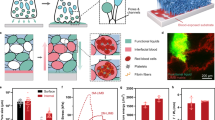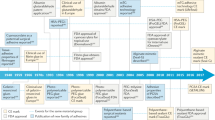Abstract
Vessel ligation using energy-based surgical devices is steadily replacing conventional closure methods during minimally invasive and open procedures. In exploring the molecular nature of thermally-induced tissue bonds, novel applications for surgical resection and repair may be revealed. This work presents an analysis of the influence of unbound water and hydrophilic glycosaminoglycans on the formation and resilience of vascular seals via: (a) changes in pre-fusion tissue hydration, (b) the enzymatic digestion of glycosaminoglycans (GAGs) prior to fusion and (c) the rehydration of vascular seals following fusion. An 11% increase in pre-fusion unbound water led to an 84% rise in vascular seal strength. The digestion of GAGs prior to fusion led to increases of up to 82% in seal strength, while the rehydration of native and GAG-digested vascular seals decreased strengths by 41 and 44%, respectively. The effects of increased unbound water content prior to fusion combined with the effects of seal rehydration after fusion suggest that the heat-induced displacement of tissue water is a major contributor to tissue adhesion during energy-based vessel sealing. The effects of pre-fusion GAG-digestion on seal integrity indicate that GAGs are inhibitory to the bond formation process during thermal ligation. GAG digestion may allow for increased water transport and protein interaction during the fusion process, leading to the formation of stronger bonds. These findings provide insight into the physiochemical nature of the fusion bond, its potential for optimization in vascular closure and its application to novel strategies for vascular resection and repair.





Similar content being viewed by others
References
Alimova, A., R. Chakraverty, R. Muthukattil, S. Elder, A. Katz, V. Sriramoju, S. Lipper, and R. R. Alfano. In vivo molecular evaluation of guinea pig skin incisions healing after surgical suture and laser tissue welding using Raman spectroscopy. J. Photochem. Photobiol. B 96:178–183, 2009.
Arya, S., N. Hadjievangelou, S. Lei, H. Kudo, R. D. Goldin, A. W. Darzi, D. S. Elson, and G. B. Hanna. Radiofrequency-induced small bowel thermofusion: an ex vivo study of intestinal seal adequacy using mechanical and imaging modalities. Surg. Endosc. 27:3485–3496, 2013.
Barbosa, I. Improved and simple micro assay for sulfated glycosaminoglycans quantification in biological extracts and its use in skin and muscle tissue studies. Glycobiology 13:647–653, 2003.
Bass, L. S., N. Moazami, J. Pocsidio, M. C. Oz, P. Logerfo, and M. R. Treat. Changes in type I collagen following laser welding. Lasers Surg. Med. 12:500–505, 1992.
Burt, J. D., M. Siddins, and W. Morrison. Laser photoirradiation in digital flexor tendon repair. Plast. Reconstr. Surg. 108:688–694, 2001.
Cezo, J. D., E. A. Kramer, J. A. Schoen, V. L. Ferguson, K. D. Taylor, and M. E. Rentschler. Tissue storage ex vivo significantly increases vascular fusion bursting pressure. Surg. Endosc. 2015. doi:10.1007/s00464-014-3900-4.
Cezo, J. D., E. A. Kramer, K. D. Taylor, V. L. Ferguson, and M. E. Rentschler. Tissue fusion bursting pressure and the role of tissue water content. In: Ryan, T. P (Ed.), Proc. SPIE 8584, Energy-based treatment of tissue and assessment VII, 85840M, vol 8584. SPIE Proceedings, 2013. doi:10.1117/12.2002184.
Cezo, J. D., E. Kramer, K. D. Taylor, V. Ferguson, and M. E. Rentschler. Temperature measurement methods during direct heat arterial tissue fusion. IEEE Trans. Biomed. Eng. 60:2552–2558, 2013.
Cezo, J. D., A. C. Passernig, V. L. Ferguson, K. D. Taylor, and M. E. Rentschler. Evaluating temperature and duration in arterial tissue fusion to maximize bond strength. J. Mech. Behav. Biomed. Mater. 30:41–49, 2014.
Chen, R. K., M. W. Chastagner, J. D. Geiger, and A. J. Shih. Bipolar electrosurgical vessel-sealing device with compressive force monitoring. J. Biomech. Eng. 136:061001, 2014.
Cilesiz, I. Controlled temperature photothermal tissue welding. J. Biomed. Opt. 4(3):327–336, 1999.
Entezari, K., P. Hoffmann, M. Goris, A. Peltier, and R. Van Velthoven. A review of currently available vessel sealing systems. Minim. Invasive Ther. Allied Technol. 16(1):52–57, 2007.
Farndale, R. W., D. J. Buttle, and A. J. Barrett. Improved quantitation and discrimination of sulphated glycosaminoglycans by use of dimethylmethylene blue. Biochim. Biophys. Acta. 883(2):173–177, 1986.
Fenner, J. W., W. Martin, H. Moseley, and D. J. Wheatley. Dehydration: a model for (low-temperature) argon laser tissue bonding. Phys. Med. Biol. 39:2147–2160, 1994.
Figueiredo, R. L. P., M. S. S. Dantas, and R. L. Oréfice. Thermal welding of biological tissues derived from porcine aorta for manufacturing bioprosthetic cardiac valves. Biotechnol. Lett. 33:1699–1703, 2011.
Floume, T., R. R. A. Syms, A. W. Darzi, and G. B. Hanna. Optical, thermal, and electrical monitoring of radio-frequency tissue modification. J. Biomed. Opt. 15:018003, 2010.
Guthrie, C. R., L. W. Murray, G. E. Kopchok, D. Rosenbaum, and R. A. White. Biochemical mechanisms of laser vascular tissue fusion. J. Invest. Surg. 4(1):3–12, 1991.
Harold, K. L., H. Pollinger, B. D. Matthews, K. W. Kercher, R. F. Sing, and B. T. Heniford. Comparison of ultrasonic energy, bipolar thermal energy, and vascular clips for the hemostasis of small-, medium-, and large-sized arteries. Surg. Endosc. 17:1228–1230, 2003.
Henninger, H. B., C. J. Underwood, G. A. Ateshian, and J. A. Weiss. Effect of sulfated glycosaminoglycan digestion on the transverse permeability of medial collateral ligament. J. Biomech. 43:2567–2573, 2010.
Hu, L., Z. Lu, B. Wang, J. Cao, X. Ma, Z. Tian, Z. Gao, et al. Closure of skin incisions by laser-welding with a combination of two near-infrared diode lasers: preliminary study for determination of optimal parameters. J. Biomed. Opt. 16:038001, 2011.
Ishii-Nozawa, R., T. Naito, M. Mita, K. Miyazaki, Y. Matsuda, and K. Takeuchi. Effect of chondroitinase on dermatan sulfate-facilitated arginine amidase released from rabbit ear artery. Biol. Pharm. Bull. 33:150–152, 2010.
Kennedy, J. S., P. L. Stranahan, K. D. Taylor, and J. G. Chandler. High burst-strength, feedback-controlled bipolar vessel sealing. Surg. Endosc. 12:876–878, 1998.
Luescher, M., M. Ruegg, and P. Schindler. Effect of hydration upon the thermal stability of tropocollagen and its dependence on the presence of neutral salts. Biopolymers 13:2489–2508, 1974.
Miles, C. A., N. C. Avery, V. V. Rodin, and A. J. Bailey. The increase in denaturation temperature following cross-linking of collagen is caused by dehydration of the fibres. J. Mol. Biol. 346:551–556, 2005.
Morriss-Kay, G., and F. Tuckett. Immunohistochemical localisation of chondroitin sulphate proteoglycans and the effects of chondroitinase ABC in 9-to 11-day rat embryos. Development 106:787–798, 1989.
Murata, Katsumi, Koji Nakazawa, and Akio Hamai. Distribution of acidic glycosaminoglycans in the intima, media and adventitia of bovine aorta and their anticoagulant properties. Atherosclerosis 21:93–103, 1975.
Murray, L. W., L. Su, G. E. Kopchok, and R. A. White. Crosslinking of extracellular matrix proteins: a preliminary report on a possible mechanism of argon laser welding. Lasers Surg. Med. 9:490–496, 1989.
Newcomb, W. L., W. W. Hope, T. M. Schmelzer, J. J. Heath, H. J. Norton, A. E. Lincourt, B. T. Heniford, and D. A. Iannitti. Comparison of blood vessel sealing among new electrosurgical and ultrasonic devices. Surg. Endosc. 23:90–96, 2009.
Pearce, J. A., and S. Thomsen. Kinetic models of laser-tissue fusion processes. Biomed. Sci. Instrum. 29:355–360, 1993.
Person, B., D. A. Vivas, D. Ruiz, M. Talcott, J. E. Coad, and S. D. Wexner. Comparison of four energy-based vascular sealing and cutting instruments: a porcine model. Surg. Endosc. 22:534–538, 2008.
Ramachandran, G. N., and G. Kartha. Structure of collagen. Nature 174:269–270, 1954.
Schober, R., F. Ulrich, T. Sander, H. Dürselen, and S. Hessel. Laser-induced alteration of collagen substructure allows microsurgical tissue welding. Science 232:1421–1422, 1986.
Small, W., P. M. Celliers, G. E. Kopchok, K. M. Reiser, N. J. Heredia, D. J. Maitland, D. C. Eder, R. A. London, M. Heilbron, F. Hussain, R. A. White, L. B. Da Silva, and D. L. Matthews. In-vivo argon laser vascular welding using thermal feedback: open- and closed-loop patency and collagen crosslinking. Proc. SPIE 2970, Lasers in surgery: advanced characterization, therapeutics, and systems VII, 252, vol 2970. San Jose, CA, 1997. doi:10.1117/12.275050.
Smith, R., and R. Pasic. The role of vessel sealing technologies in laparoscopic surgery. Surg. Technol. Int. 17:208–212, 2008.
Sooklal, V., J. McClure, L. Hooper, and M. Larson. A laser device for fusion of nasal mucosa. Head Neck Oncol. 2:1, 2011.
Sriramoju, V., and R. R. Alfano. Management of heat in laser tissue welding using NIR cover window material. Lasers Surg. Med. 43:991–997, 2011.
Sriramoju, V., and R. R. Alfano. In vivo studies of ultrafast near-infrared laser tissue bonding and wound healing. J. Biomed. Opt. 20:108001, 2015.
Su, L., M. B. Fonseca, S. Arya, H. Kudo, R. Goldin, G. B. Hanna, and D. S. Elson. Laser-induced tissue fluorescence in radiofrequency tissue-fusion characterization. J. Biomed. Opt. 19(1):15007, 2014. doi:10.1117/1.JBO.19.1.015007.
Tang, J., G. Godlewski, S. Rouy, and G. Delacrétaz. Morphologic changes in collagen fibers after 830 nm diode laser welding. Lasers Surg. Med. 21:438–443, 1997.
Tang, Jing, David O’Callaghan, Simone Rouy, and Guilhem Godlewski. Quantitative changes in collagen levels following 830-nm diode laser welding. Lasers Surg. Med. 22:207–211, 1998.
Wallwiener, C. W., T. K. Rajab, W. Zubke, K. B. Isaacson, M. Enderle, D. Schäller, and M. Wallwiener. Thermal conduction, compression, and electrical current—an evaluation of major parameters of electrosurgical vessel sealing in a porcine in vitro model. J. Minim. Invasive Gynecol. 15:605–610, 2008.
Small, W., IV. Thermal and Molecular Investigation of Laser Tissue Welding. Ph.D. Thesis, Lawrence Livermore National Laboratory, University of California, Livermore, CA, 1998.
Weir, C. E. Rate of shrinkage of tendon collagen: heat, entropy and free energy of activation of the shrinkage of untreated tendon. Effect of acid, salt, pickle, and tannage of the activation of tendon collagen. J. Am. Leather Chem. Assoc. 44:108, 1949.
White, R. A., G. Kopchock, C. Donayre, P. Abergel, R. Lyons, and S. R. Klein. Comparison of laser-welded and sutured arteriotomies. Arch. Surg. 121(10):1133–1135, 1986.
White, R. A., G. Kopchok, S.-K. Peng, R. Fujitani, G. White, S. Klein, and J. Uitto. Laser vascular welding—how does it work? Ann. Vasc. Surg. 1:461–464, 1987.
Wright, N. T., and J. D. Humphrey. Denaturation of collagen via heating: an irreversible rate process. Annu. Rev. Biomed. Eng. 4:109–128, 2002.
Acknowledgments
The authors would like to thank Kelli Barnes and Renée Merchel for their time and support during this study.
Conflict of interest
No benefits in any form have been or will be received from a commercial party related directly or indirectly to the subject of this manuscript.
Author information
Authors and Affiliations
Corresponding author
Additional information
Associate Editor Andreas Anayiotos oversaw the review of this article.
Rights and permissions
About this article
Cite this article
Kramer, E.A., Cezo, J.D., Fankell, D.P. et al. Strength and Persistence of Energy-Based Vessel Seals Rely on Tissue Water and Glycosaminoglycan Content. Ann Biomed Eng 44, 3421–3431 (2016). https://doi.org/10.1007/s10439-016-1657-8
Received:
Accepted:
Published:
Issue Date:
DOI: https://doi.org/10.1007/s10439-016-1657-8




